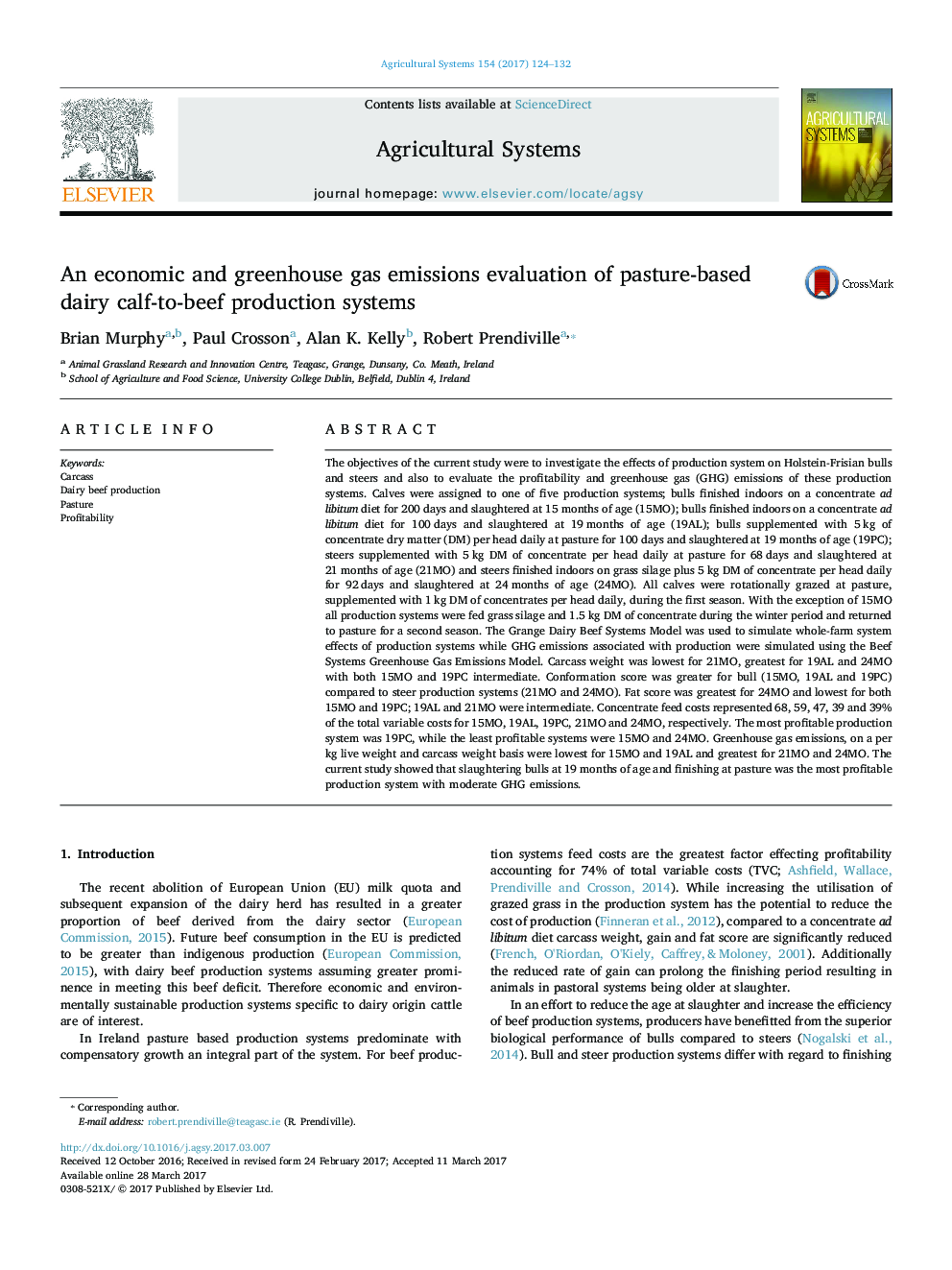| کد مقاله | کد نشریه | سال انتشار | مقاله انگلیسی | نسخه تمام متن |
|---|---|---|---|---|
| 5759667 | 1623216 | 2017 | 9 صفحه PDF | دانلود رایگان |
- Holstein-Friesian bull and steer production systems were evaluated.
- Economic implications and greenhouse gas emissions were modelled for each system.
- Carcass weight was greater for animals finished indoors than at pasture.
- Slaughtering animals during the second season at pasture was most profitable.
- Slaughtering animals at a younger age reduced greenhouse gas emissions per kg beef.
The objectives of the current study were to investigate the effects of production system on Holstein-Frisian bulls and steers and also to evaluate the profitability and greenhouse gas (GHG) emissions of these production systems. Calves were assigned to one of five production systems; bulls finished indoors on a concentrate ad libitum diet for 200Â days and slaughtered at 15Â months of age (15MO); bulls finished indoors on a concentrate ad libitum diet for 100Â days and slaughtered at 19Â months of age (19AL); bulls supplemented with 5Â kg of concentrate dry matter (DM) per head daily at pasture for 100Â days and slaughtered at 19Â months of age (19PC); steers supplemented with 5Â kg DM of concentrate per head daily at pasture for 68Â days and slaughtered at 21Â months of age (21MO) and steers finished indoors on grass silage plus 5Â kg DM of concentrate per head daily for 92Â days and slaughtered at 24Â months of age (24MO). All calves were rotationally grazed at pasture, supplemented with 1Â kg DM of concentrates per head daily, during the first season. With the exception of 15MO all production systems were fed grass silage and 1.5Â kg DM of concentrate during the winter period and returned to pasture for a second season. The Grange Dairy Beef Systems Model was used to simulate whole-farm system effects of production systems while GHG emissions associated with production were simulated using the Beef Systems Greenhouse Gas Emissions Model. Carcass weight was lowest for 21MO, greatest for 19AL and 24MO with both 15MO and 19PC intermediate. Conformation score was greater for bull (15MO, 19AL and 19PC) compared to steer production systems (21MO and 24MO). Fat score was greatest for 24MO and lowest for both 15MO and 19PC; 19AL and 21MO were intermediate. Concentrate feed costs represented 68, 59, 47, 39 and 39% of the total variable costs for 15MO, 19AL, 19PC, 21MO and 24MO, respectively. The most profitable production system was 19PC, while the least profitable systems were 15MO and 24MO. Greenhouse gas emissions, on a per kg live weight and carcass weight basis were lowest for 15MO and 19AL and greatest for 21MO and 24MO. The current study showed that slaughtering bulls at 19Â months of age and finishing at pasture was the most profitable production system with moderate GHG emissions.
Journal: Agricultural Systems - Volume 154, June 2017, Pages 124-132
